No, cats cannot take your breath away.
The urban legend about cats suffocating babies has been around for centuries but it is something that is highly unlikely to actually occur, particularly on purpose.
The reports of this happening are scarce and have very limited evidence or scientific backing.
While a cat may try to snuggle a baby which could result in accidental suffocation, a cat won’t take a baby’s breath away because of the milky scent or because the cat is jealous.
There are a number of simple ways you can ensure the safety of your baby and your cat as your family grows.
Most notably, it’s best not to leave your baby and your cat together unsupervised.
Contents
Origins Of The Cat Stealing Breath Idea
The idea that a cat will steal a baby’s breath while they sleep has been circulating for the past 300+ years.
It is believed that the cat is either attracted to the milk smell of the baby’s breath or is jealous that the owner now spends more time with the baby.
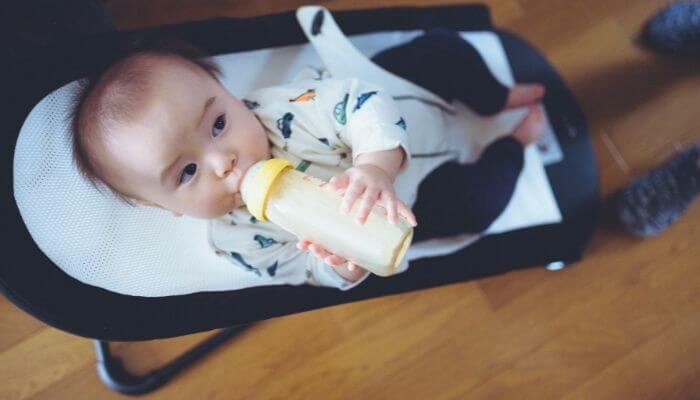
This then motivates the cat to steal the breath of the baby, ultimately resulting in death.
Society has long viewed cats as being associated with negativity and bad luck so these types of stories have been shared from person to person for centuries with little to no evidence needed.
Even when the official cause of death was not the cat, there seems to be an “everybody knows what really happened” undertone for those who believe this urban legend and those who carry the story on.
Are There Any Documented Cases Of Cats Suffocating Babies?
There are very few documented cases of cats suffocating babies.
In 1791, a coroner reported that a baby’s cause of death was a cat sucking its breath causing strangulation.
This claim was later proven false.
It is this kind of misinformation that has kept the idea circulating for all of this time.
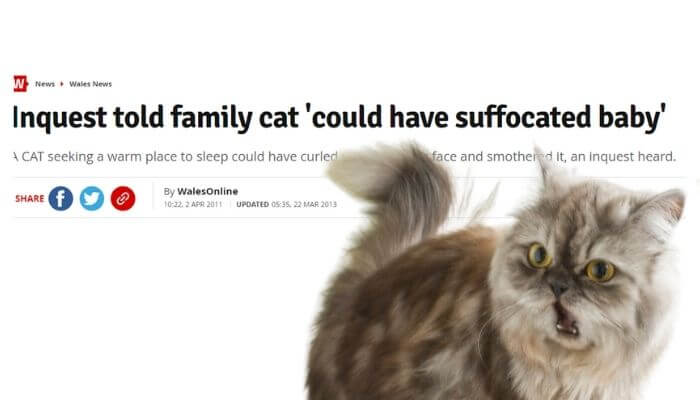
Babies can suffer from Sudden Infant Death Syndrome (SIDS), this is an unexpected and unexplained death of an otherwise healthy baby.
It’s important to keep in mind that it wasn’t until 1969 that the first definition of SIDS was formulated, and then in 1989 the National Institutes of Health released an official definition.
The understanding of SIDS has developed over time. In the early 1900s, a paediatric journal blamed sleep deaths on cats.
It can be assumed that many of the apparent cat-caused deaths were most likely a result of SIDS but were blamed on cats because the baby was otherwise healthy, there was a cat in the home, and SIDS wasn’t yet understood.
There have been a few news articles over the years claiming a cat has suffocated a baby, but none have been certain and the cause of death could not be determined.
In these incidents, it was thought to be a “theoretical possibility” that the death was caused by the cat.
In one incident, the baby was sleeping in a pram covered by a blanket and the cat lay on the blanket (probably unaware of the baby underneath).
In this situation, the death could’ve been caused, accidentally, by the cat.
Why Are Cats Attracted To Baby’s Breath?
Cats are said to be attracted to the milk smell of a baby’s breath.
Cats may also be attracted to baby cribs because of the warmth and height of this sleeping spot.
However, many cats seem to prefer to keep their distance from babies.
It’s more likely new parents will struggle to get their cat to relax with a new baby rather than struggling to keep the cat away.
Cats Killing Babies Statistics
Since 1980, there have been four suspected cases of cats suffocating babies, in three of these cases the only evidence was that the cat was in the same room as the baby.
Some articles about those cases can be seen here:
- https://www.thefreelibrary.com/BABY+DEATH%3A+CAT+NOT+TO+BLAME.-a068791407
- https://www.telegraph.co.uk/news/uknews/1379196/Sleeping-cat-suffocates-baby.html
- https://www.walesonline.co.uk/news/wales-news/inquest-told-family-cat-could-1837124
It’s important to remember that babies can suffer from SIDS and that cats were sometimes used to explain SIDS (without any evidence).
In 2000, a woman said her six-week-old son died after the family cat lay on their face. Pathologists later found the cause of death to be SIDS.
Every so often one of these claims may truly be an awful accident involving the family pet but more often than not, this is not the case.
Are Cats Safe For Babies?
Yes, with the right precautions and supervision, cats are safe and can co-exist with babies.
However, a cat could lay with a sleeping child for warmth and in extremely rare instances accidentally smother the child.

Fortunately, this can be avoided with a few simple precautions.
The following precautions can help to keep you, your baby, and your cat safe:
1. Wash Hands Regularly
Cats can get toxoplasmosis by eating infected meat and this parasite can then be shed in their faeces.
This parasite can cause birth defects in babies if picked up by pregnant women.
This is why handwashing, wearing gloves when gardening or clearing out the litter box, and not giving your cat raw meat are recommended during pregnancy.
2. Make Changes Slowly
Cats love their routine and aren’t too fond of change.
Help get your cat prepared for the new arrival by making changes to the home (e.g. moving furniture) slowly and giving your cat time to adapt to the changes well before the little one arrives.
3. Change Routines In The Months Before The Baby’s Arrival
Switch any routines, food locations, litter box locations, etc. within the one-two months before the baby arrives.
4. Keep The Cat Out Of The Nursery
When you first come home with your baby, make sure the crib and places where the baby sleeps are off-limits to your cat.
Place one of the baby’s used blankets in a quiet place for your cat to smell and investigate.
When you introduce your cat and baby, make it a quiet time where you can all greet and interact without interruption.
Don’t leave your cat and baby together unsupervised and always close the door to the nursery when your baby is napping.
5. Don’t Forget: Hygiene, Patience, Safety
- Hygiene – Keep on top of your cat’s regular vaccinations, preventative prescriptions, and vet checkups. Always dispose of your baby’s soiled items properly to avoid your cat getting near them.
- Patience – Remember that this is a big change for your cat and they may take some time to get used to the baby. Be patient and don’t worry if your cat keeps their distance from the little one at first as they become familiar with the changes.
- Safety – Don’t leave your cat and baby alone together and always make sure your cat has somewhere quiet and safe where they can go to be away from the baby if needed. Your cat may need time away from the noise and potentially rough/heavy-handed attention of a baby/ toddler.

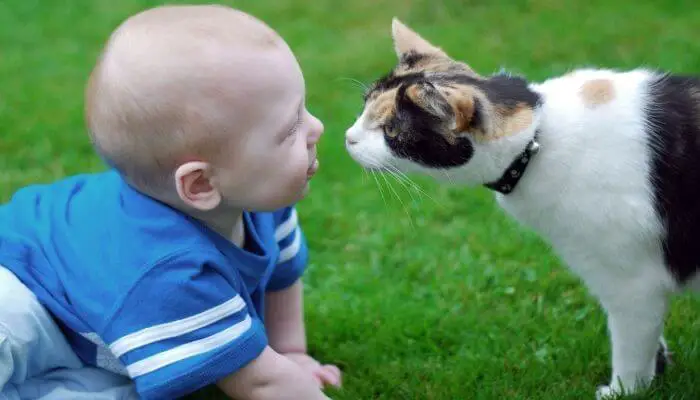
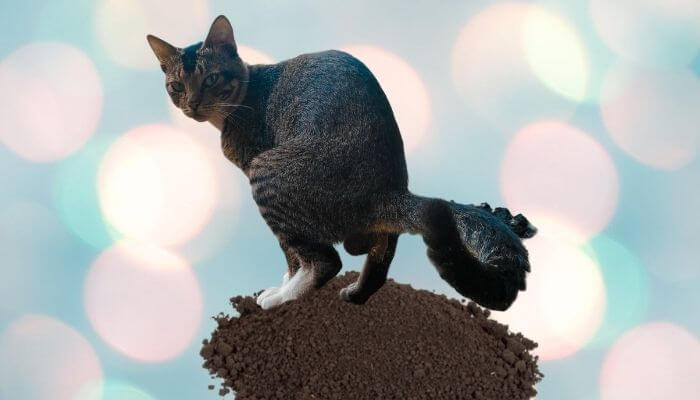


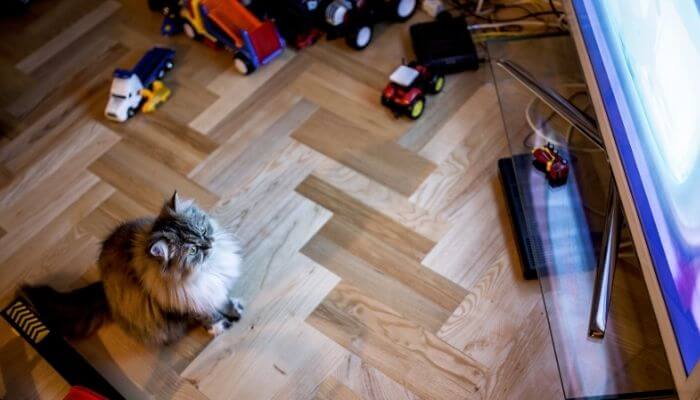
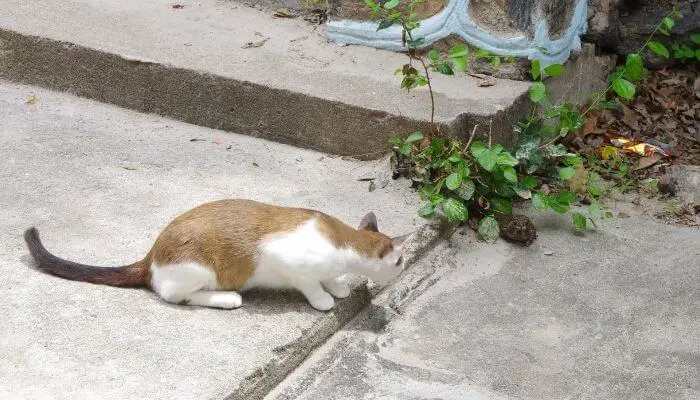

Leave a Comment